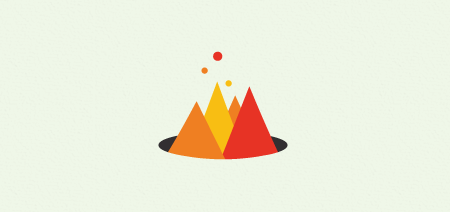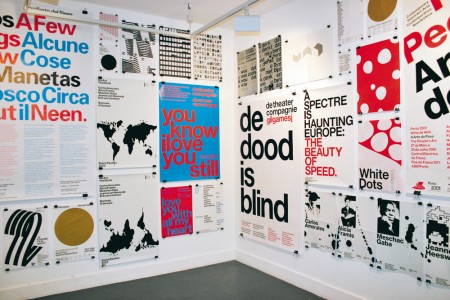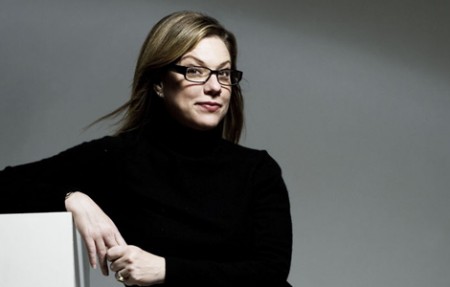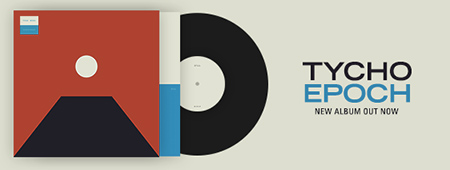
You may have noticed I’ve been a little less prolific around here lately; finally I can tell you why. I’m very excited to say that as of last November, I dropped out of my MFA program and am a cofounder of Firespotter Labs, a startup funded by Google Ventures. As cool as the concept of “stealth mode” sounds to me, I am decidedly *not* used to *not* writing about what I’m doing. Finally my sneakiness is over! In this post I want to talk a little bit about what it’s been like working full time at a startup, as well what went into the decision to drop out of my design program five months away from graduation. I really couldn’t be happier.
Of course all this would be more interesting if you knew exactly what we were doing. I wrote our About Us the other day and it’s spectacularly vague, so if you want to find out a little more, there were nice articles in The New York Times and Techcrunch last week.
Continue reading →


Late last year I had to pleasure of interviewing Danny, Marieke and Erwin of Experimental Jetset. Founded in 1997 and based in Amsterdam, Experimental Jetset is one of the most exciting and highly regarded studios working today. They create exceptionally beautiful work; immediately recognizable for its top notch quality and unique remixing of modernist principles and stylings. Their global renown continues to soar– most recently thanks to their part in Helvetica and the extreme popularity of their (now re-released) John&Paul&Ringo&George shirts.
A quick perusal of their website can easily turn into hours as you browse through their catalog of work and read their comprehensive descriptions of each project. In these descriptions, and especially in interviews, the depth of their reflection is astounding. They take great care to consider every perspective — whether it be a report of one of their own projects, or an answer to a seemingly basic interview prompt — their ability to discuss Design and work is as remarkable as it is fascinating. What follows is our discussion from November 2009. Enjoy!
Continue reading →

Design Matters, the long running design radio show by Debbie Millman, is making the jump to the small screen. SVA is producing a TV version of the show and will be taping the pilot episode this Friday. The first two guests are Milton Glaser and Stefan Sagmeister. To top it all off, the show will be directed by the wonderful Hillman Curtis. I’m not sure where the end result will be available, but I’m sure those details will be revealed in the coming days. I’m hoping for the Thursday 8pm slot on NBC.
If you’re in New York, the taping is open to the public — more information can be found on the Facebook event site. Why don’t I live in New York. Sometimes I want to defollow all of the New York designers on Twitter because all these cool events make me jealous.
I recently met Debbie Millman when she was in town to give a talk at school. Her talk was terrific and I’ll try to do a short write up later this week after I go over my notes. I also participated in her workshop about visual storytelling, which she led having just released her new book. She had each of us write a short story, which she reviewed and then set us on our mission of illustrating the story using all sorts of fun tools. It was fun to write fiction — I’ve become rather used to this “blog style” of writing that I forgot there was a whole other way to go about things. (My story is here if you’re feeling adventurous.) The workshop was great — I love periodically going back to the drawing board, literally, and breaking out the pencils pens and crayons. It was also great to just let loose creatively with no rules, objectives, or criteria. Something I certainly don’t do enough.
via swissmiss

Non-Format is one of the most exciting studios working today. Comprised of Kjell Ekhorn (Norwegian) and Jon Forss (British), Non-Format is known for an exceptionally innovative approach to typography and a fresh, boundary-smashing graphic style. Clients such as Nike, Coca Cola and The New York Times have all tapped the studio’s award winning and internationally acclaimed design talent. Operating on two continents, Non-Format is based in Oslo, Norway and Minneapolis, USA.
One of my first assignments at design school was to bring in some books that I found inspiring. As I had just started the program, I didn’t really have much to show for myself, and I distinctly remember arriving that day to see that around 3/4 of the class had all brought the same book: Non-Format’s Love Song. The extent of their influence on the field of design became immediately clear to me. Since then I’ve kept a close watch on the studio and am always excited to see what they’ve been working on. Recently I had the privilege of interviewing Jon and Kjell and our exchange is after the jump.
Continue reading →


As of this summer I am officially halfway through my graduate design program at the Academy of Art. Unlike a BFA degree, the MFA requires the completion of a thesis, and the second half of the graduate program is dedicated to the development of this. The most recent checkpoint I had to clear was Midpoint; basically a review of your work and skills to date, as well as a clearing ground for your upcoming project. It’s a pretty exciting meeting actually; you place all your work on the table, in front of a faculty committee, and they determine whether you are fit to continue. The main focus of the meeting is your thesis proposition. Before they allow you to embark on a 1-2 year thesis project, they want to make sure your idea is viable and worth pursuing.
I am past the Midpoint stage now and am in a class called Thesis Development this summer. It is a very different class than those that I’ve written about previously. Rather than creating a series of graphic design based projects, we are spending all of our time researching and strategizing how we are going to go about the next few years. I always picture that scene in Apollo 13 when they are trying to get back to Earth and only have one chance to fire their rocket boosters to enter the atmosphere at the correct angle. It is extremely important that they get their aim correct, else they bounce off the atmosphere and careen into space and die. I think of this class as that moment in the space flight; we are aiming where we want to go before firing our boosters over the next year and trying and pull off a successful project.
Above you see a piece created for the class. It is a piece of design, as everything we bring to school must be, but the main purpose of the document is to chart my progress over the next year. It divides the weeks up into sections and outlines what I should be doing when. I expect it to change many times over the course of the coming months (it’s already way off base), but it really helps having a checklist like this to keep tabs on my progress. I have never pursued a project of this magnitude before and the planning involved is unlike any design challenge I have been faced with previously. Most of the time I just open Illustrator and start drawing lines and scribbles until things look cool.
A graphic design thesis is a very interesting concept. The biggest thing I struggled with, as I decided on a topic, was whether my thesis would implement graphic design, and pursue an issue outside the field, or whether it would be about Graphic Design itself, and aim to make waves within the design community. Most projects do the former. We are lucky in this way — because design really can be used to solve just about any problem — but there is the concern that this strategy will be of no relevance to the actual field of study. I still don’t know quite what to make of this dilemma. I have tried to meld the two directions with my project (I’ll discuss details in later process posts), but I am unsure whether it will end up being that much more effective because of this, or if it will fail because I never decided which path to pursue. I guess it’s still too early in the process to know.







